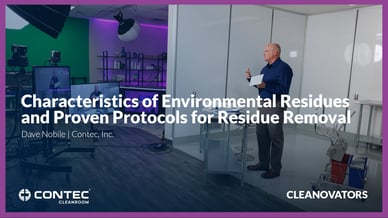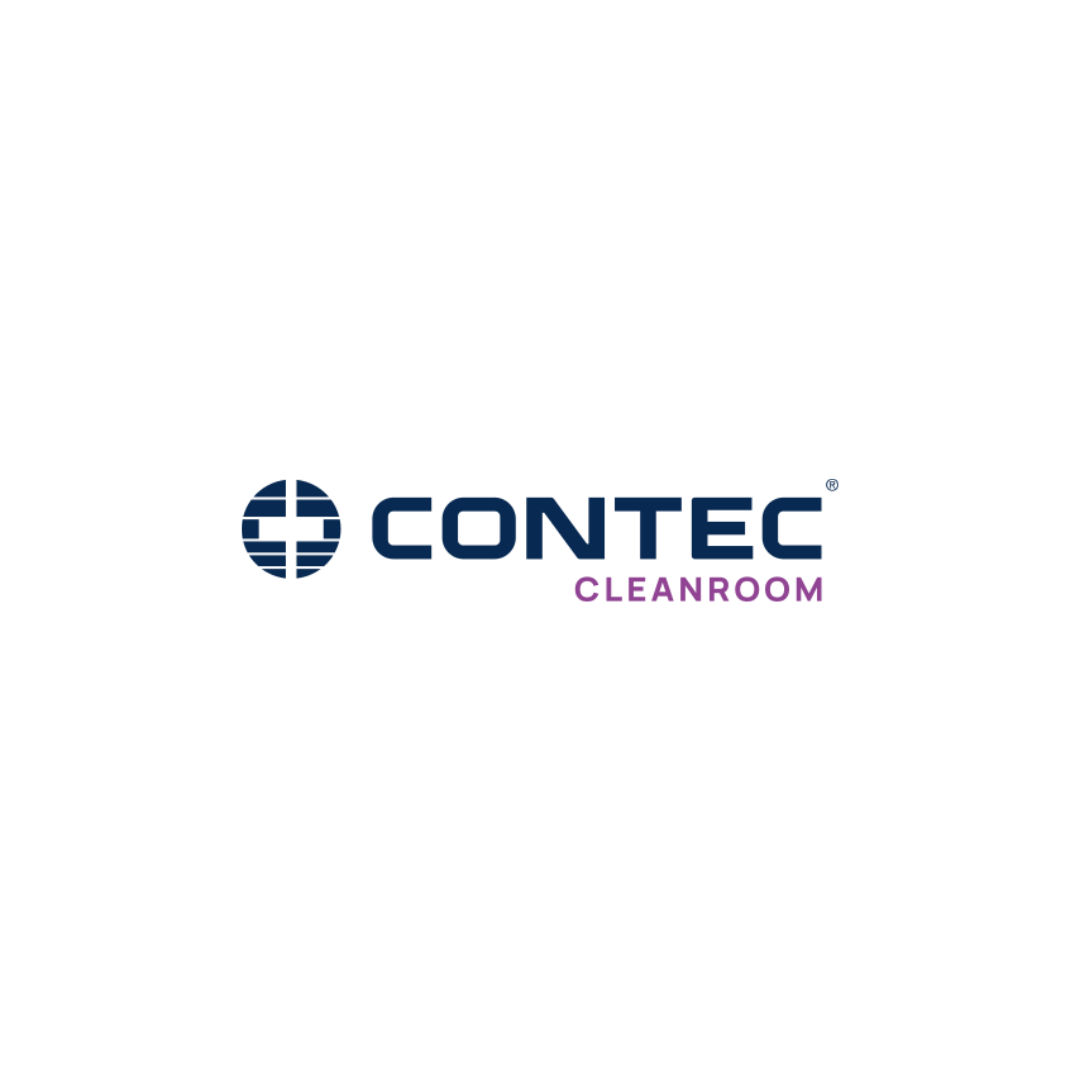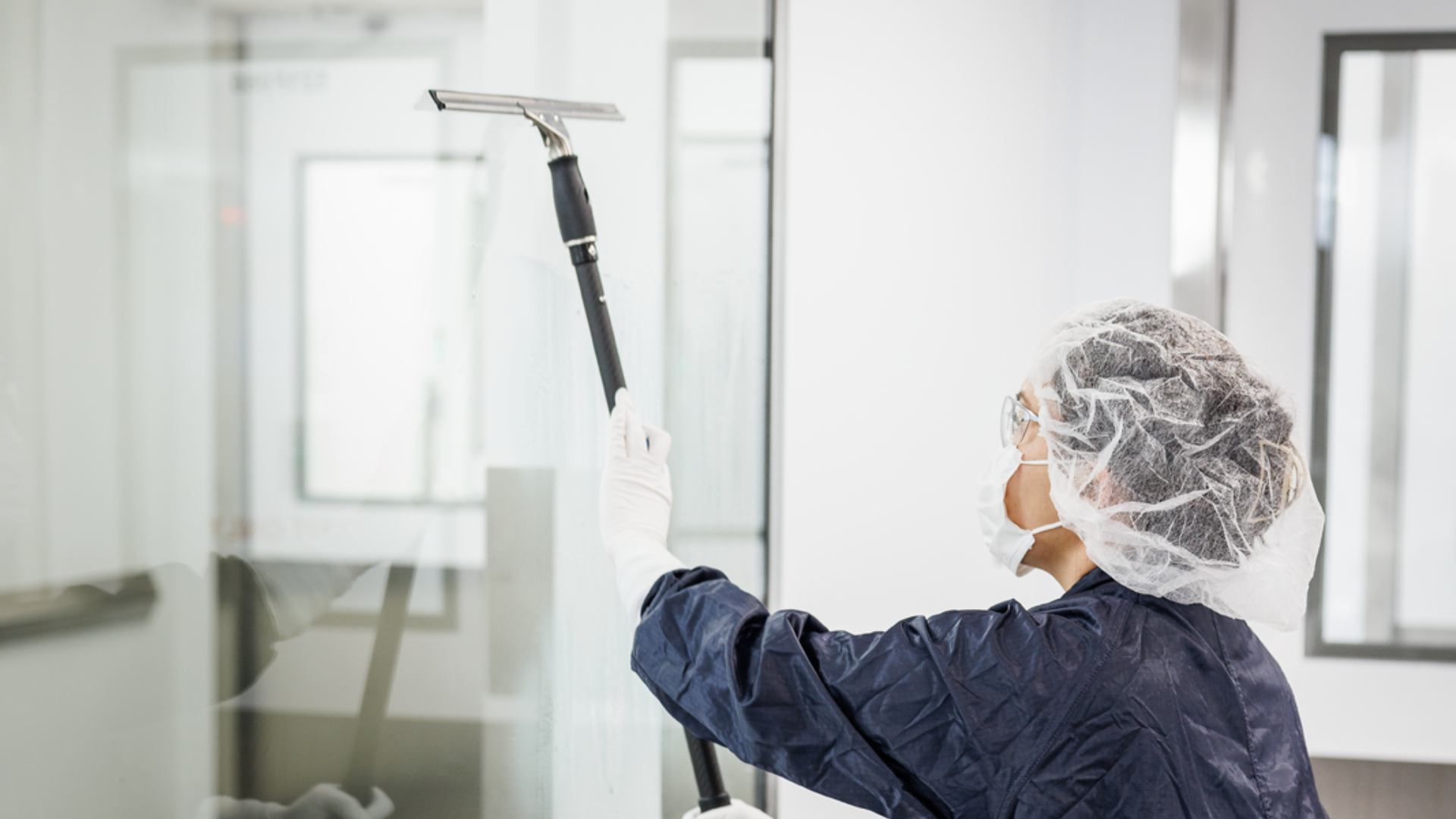Modern cleanrooms have enabled incredible advancements in the manufacture of many modern wonders, from microelectronics and pharmaceutical drugs, to medical devices and most currently, genetic- and cellular-based immunotherapies. When we think of a cleanroom, we typically picture a white, scrupulously clean space where operators and equipment are controlled to prevent any trace of contamination into the room.
In many of these modern operations however, the need for production equipment and human involvement results in sources of contamination that are a constant threat to the cleanroom facility. This is especially true in the manufacture of pharmaceutical drugs, medical devices, and immunotherapies (e.g. life sciences) where disinfectant solutions are used to control contamination from microorganisms such as bacteria, viruses, and molds.
Out of Sight, Out of Mind
The disinfectant solutions used in the life science industries leave residues on the cleanroom environmental surfaces (floors, walls, ceilings). These environmental residues, although widespread, can become invisible to those who work daily in cleanroom environments. Evidence of residue issues such as cloudy or streaked windows, sticky or slippery floors, and discoloration of floors (especially in corners and around doorways) are often overlooked indicators of a residue problem. Unfortunately, these issues are often accepted as the unavoidable result of using disinfectants in cleanrooms requiring microbial control. However, the basic standard of any clean room, regardless of its ISO classification, is to be visibly clean – a standard often missed due to ignored residues.
Recognizing Problems Caused by Residues
Environmental residues in clean rooms, primarily affecting floors and windows, present a specific challenge in maintaining the required cleanliness in most cleanroom facilities. These residues, very often overlooked, frequently lead to very real problems including worker injury from slip/fall accidents, equipment degradation in the form of rouging and corrosion, and visible contamination in the form of floor staining and discoloration. These residues can even compromise the integrity of critical processes and product quality if left unchecked.
READ MORE ON OUR RESIDUE REMOVAL RESEARCH HERE.
Critically, while the vast majority of bio-pharmaceutical cleanrooms have issues with excessive residues, the very real risks and problems caused by these residues are rarely captured or revealed via environmental monitoring.
Challenges to Residue Removal
Residue removal is often not as straightforward as it might seem. The nature of the residue, the surfaces it adheres to, and the duration it has been present significantly impact the removal process. For instance, disinfectant residues adhere differently to stainless steel, glass, and vinyl floors. The longer a residue remains on a surface, the more challenging its removal becomes.
Effective Removal Techniques
The key to effective residue removal lies in understanding the characteristics of the residue and the challenges they present. The use of appropriate solvents, particularly water, plays a pivotal role in this process - the choice of solvent must be based on the nature of the residue and the surface. In some cases, repetitive mopping or more extensive mechanical action may be required, especially if the residue is the result of frequent application and has accumulated over a long period of time.
 Ongoing Residue Management
Ongoing Residue Management
For effective ongoing management of disinfectant residues, it is crucial to establish a clean baseline. This means bringing the facility to a manageable level of cleanliness (or residue) and maintaining it at or below the baseline level. The frequency and method of residue removal should be tailored to the specific needs of the facility, considering factors like the type of residue, the nature of the surface, frequency of disinfectant application, and production schedules.
Management of disinfectant residues on environmental surfaces in cleanrooms is a critical aspect of any Contamination Control Strategy (ref. Eudralex Annex 1). A visibly clean environment is not just a regulatory requirement but a fundamental necessity for the integrity of cleanroom operations and production processes in pharmaceutical, cell and gene therapy, medical device, and other life science facilities. Understanding the nature of residues and adopting strategic approaches for their removal and management is key to maintaining the high standards of cleanliness required in these critical environments. By addressing this often-overlooked aspect of contamination control, companies can ensure the quality, safety, and reliability of their operations and their products.
Contec Cleanroom offers a line of residue removal solutions and wipes to help you maintain a process for residue removal. Learn more here.




.png)
.png)